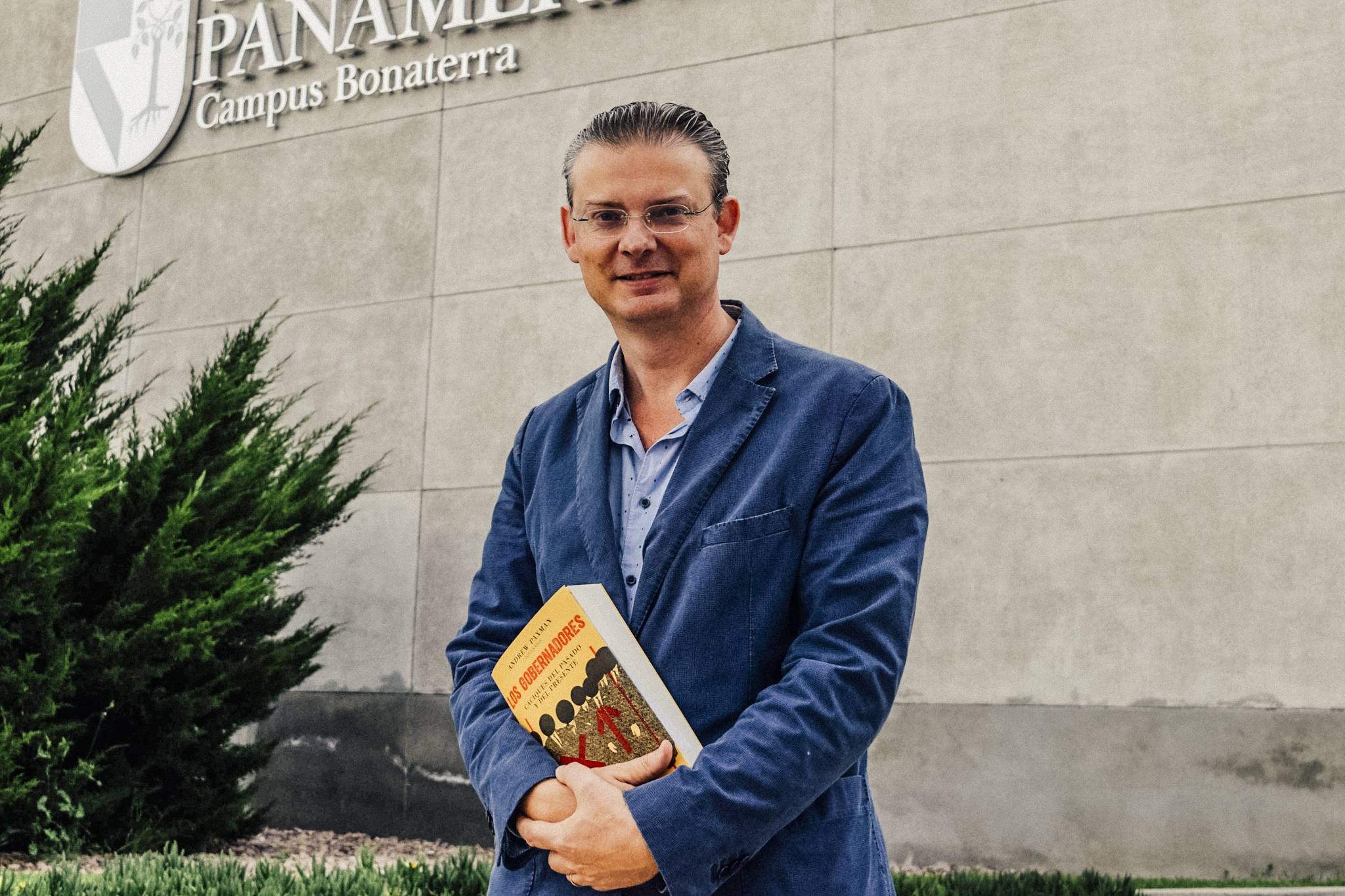Televisa: The Manufacturer of Mexico’s News
Andrew Paxman, a professor of history and journalism at the Center for Research & Teaching in Economics in México, is currently working on a book about the recent history of the Mexican press. His previous books include El Tigre, a co-authored biography of media mogul and Televisa owner Emilio Azcárraga Milmo, and Jenkins of Mexico: How a Southern Farm Boy Became a Mexican Magnate. Paxman has also edited Los gobernadores, a look at México’s post-revolutionary and contemporary state governors.
“I heard that on the news,” people often say, as if that made what they heard an indisputable fact. Other people then repeat and re-tweet that “fact,” over and over, until that “fact” becomes our conventional wisdom. Major media outlets — like México’s Televisa or the New York Times — create a good bit of our “common knowledge” in just this fashion. They’re talking, in effect, into a megaphone. Other media outlets pick up what they report and act as an echo chamber for it. Other perspectives simply get lost.
As historian Andrew Paxman recounts in our interview, Televisa has exploited its near-monopoly status to give people the “facts” that Televisa has wanted people to hear, and that news has encouraged support for the PRI, México’s corrupt ruling party for most of the last century. For the owners of mega media, a sweet deal. They promote the neoliberal politicians dedicated to boosting the private sector. Those pols pass laws to help media barons grow their fortunes. Televisa’s owners rank among the richest men in México.
México’s megamouth media also routinely attack AMLO, whose efforts to roll back neoliberal policies threaten their top-of-the-food chain status. The US counterparts to the Mexican media take their cue from those attacks. Corporate America also has its own reasons for painting AMLO — and not México’s old elite — as a dangerous predator. US corporate execs see AMLO’s push to get Mexico’s private energy sector back under public control as a direct threat to their “right” to exploit México’s natural resources.
How can we dampen this right-wing din? Our México Solidarity Project and independent journalists from both the US and México are joining together to counter what media megamouths on both sides of our common border are spewing. Our media, we all believe, ought to help better the lives of all the little fish of the sea, not just feed the big-mouth sharks trawling the big dark deep.
The company that would become the TV giant Televisa started up in 1955. What kind of family did the founder come from, and what opportunity did he see?
Televisa was founded as TeleSistema Mexicano when several stations merged under the leadership of Emilio Azcárraga Vidaurreta, who had already built a near-monopoly in radio. The programming on his stations would be nationalistic yet also pro-American, routinely supportive of the PRI, especially its right wing, and permeated with social Darwinism: The poor should know their place and let the white elite get on with running the country.
Azcárraga passed Televisa on to his son, Azcárraga Milmo in 1972, and then his grandson Azcárraga Jean took over at his father’s death in 1997.
What relationship did Televisa have with the PRI?
Adolfo Ruiz Cortines, México’s PRI president from 1952 to 1958, permitted a monopoly in TV, despite a constitutional prohibition, presumably because he saw its propagandistic potential. That set the tone for the Azcárraga family’s relationship with the PRI, a symbiosis that protected their respective hegemonies, in TV and in politics.
So, for example, after the 1985 earthquake, Televisa minimized the impact of the 1985 earthquake on México City. Then, in the 1988 election, Televisa backed the PRI’s Carlos Salinas, marginalized and derided leftwing candidate Cuauhtémoc Cárdenas, and helped rebuild Salinas’s credibility after the rigged voting. In the early ’90s, Televisa conducted propaganda campaigns in both México and the USA to push Mexico’s accession to NAFTA.
These last two examples illustrate the especially cozy relationship between the founder’s son, Emilio Azcárraga Milmo, aka “El Tigre,” and Salinas.
In 2007, Mexican lawmakers passed legislation that would undermine the revenue of Televisa. Did this happen because the new president, Felipe Calderón, came from the PAN party and not the PRI?
No. After the 2006 election, México saw a multi-party backlash to Televisa’s favoring of Calderón and its heavy-handed pushing of a so-called “Televisa Law,” legislation that promised the national transition from analog to digital would not harm Televisa’s dominance over television. That backlash in late 2007 produced a new electoral law with a clause that banned paid TV ads in favor of free airtime for political parties, a new order that the Federal Electoral Institute, the IFE, would oversee.
Andrés Manuel López Obrador has always maintained he was cheated of victory in 2006, and I think he’s right, but not so much due to voter fraud — something I think he overstates — as the massive wave of attack ads against him that spring.
Think of the “tank ride” ad that helped the Republicans sink the Dukakis campaign in 1988 or the Republican “swift-boating” of the Kerry campaign in 2004. But this onslaught against AMLO would be even worse, because in México attack ads are illegal, and the IFE waited ten weeks before stopping them. By that time AMLO’s 10-to-15-point polling lead had vanished. He lost by just 0.6 percent — and then the Federal Electoral Tribunal ruled that the attack ads against AMLO, while illegal, could not be said to have altered the result.
Rubbish! What ignorance of the impact that media can make!
Has Televisa ever been caught putting out fake news?
Not exactly. Historically, Televisa’s main deception has been its biased coverage of presidential and gubernatorial elections. Under owner Emilio Azcárraga Jean, who took control after the death of El Tigre in 1997, the bias became more selective. Televisa’s coverage of the watershed election of 2000 — the voting that finally unseated the PRI — showed only a slight bias. The coverage in 2006 and 2012 would be highly biased against AMLO. Then, in 2018, the coverage would be fair, probably because Televisa knew that by then AMLO had become too popular to stop.
Televisa probably came closest to fake news with its 2005 coverage of the capture of the French woman Florence Cassez, along with other alleged members of a kidnapping gang, and the freeing of their hostages. That capture, we later learned, had been re-staged for the cameras some days after the real operation, to make a newly established federal police force look good. Cassez’s nationality amped up the scandal. Carlos Loret de Mola, who later claimed he’d been duped, narrated the coverage for Televisa.
Carlos Loret de Mola! Wasn’t he Televisa’s star reporter and a darling of the US press?
Loret made his reputation over a dozen years or so on Televisa’s breakfast newscast. The Cassez affair tarnished his reputation, but Loret remained highly popular. He left Televisa in 2019 after putting together a special report on the many undeclared real estate holdings of Manuel Bartlett, the member of AMLO’s cabinet who heads the Federal Electricity Commission.
Loret ran that exposé on his radio show, not on Televisa, and the report became a big embarrassment for the government. On W Radio, an outlet that Televisa used to own, and Latinus, a website reportedly funded by veterans of the PRI, Loret has reinvented himself as a leading critic of AMLO’s government.
Journalism has been one of the most dangerous professions in México. Have any Televisa reporters or staff been disappeared?
Televisa news teams strive to stay on friendly terms with presidents and governors, and Televisa acted as the main advocate of a 2011 media pact with Calderón to self-censor drug war coverage. That sort of behavior has left Televisa staff rarely targeted, either by corrupt politicians or by criminal organizations.
What connects Televisa and US media companies? Do these connections affect the news that the US public receives about México?
Last year Televisa merged its content business with US Spanish-language broadcaster Univision. The merger included the news divisions, but as far as I know they still operate separately. Univision has its own correspondents in México, and I sense they have greater editorial freedom.
What future do you see for Televisa? Will it play a role in the 2024 election?
Televisa’s huge influence began to decline slowly in the mid-1990s, with competition from TV Azteca and cable news, then more quickly during the Calderón years from 2006 to 2012, when a critical mass of Mexicans were switching for news and entertainment to the Internet. But that didn’t stop Televisa from doing more than anyone — possibly even more than the PRI itself — to get Enrique Peña Nieto elected in 2012.
Televisa’s influence has declined more quickly still in the last ten years, as audiences have become yet more fragmented. But Televisa remains the biggest media player by some distance, thanks to pay-TV and several Internet sites, as well as its broadcast operations. We can’t discount Televisa as a force in next year’s election. If at any point Televisa senses that Morena’s chances have dropped below 50-50, it may well opt to back the opposition candidate, since its natural affinities remain with the right.
But AMLO has always known this. In 2009 he began calling his opponents “the mafia of power,” and Televisa’s role emerged as central to his critique. When they put aside their differences ahead of the 2018 campaign, AMLO was effectively following Don Corleone’s maxim from The Godfather Part II: “Keep your friends close and your enemies closer.”
The same principal governed AMLO’s reconciliation with the right-wing owner of TV Azteca, México’s second largest broadcaster, Ricardo Salinas Pliego.
So opposing Morena in 2024 would be risky for Televisa. AMLO, for instance, could use his final months in power to give telecom mogul Carlos Slim the permission he’s long sought to enter the pay-TV market, now Televisa’s biggest profit-center. I think the threat of that move should keep Televisa in check.

